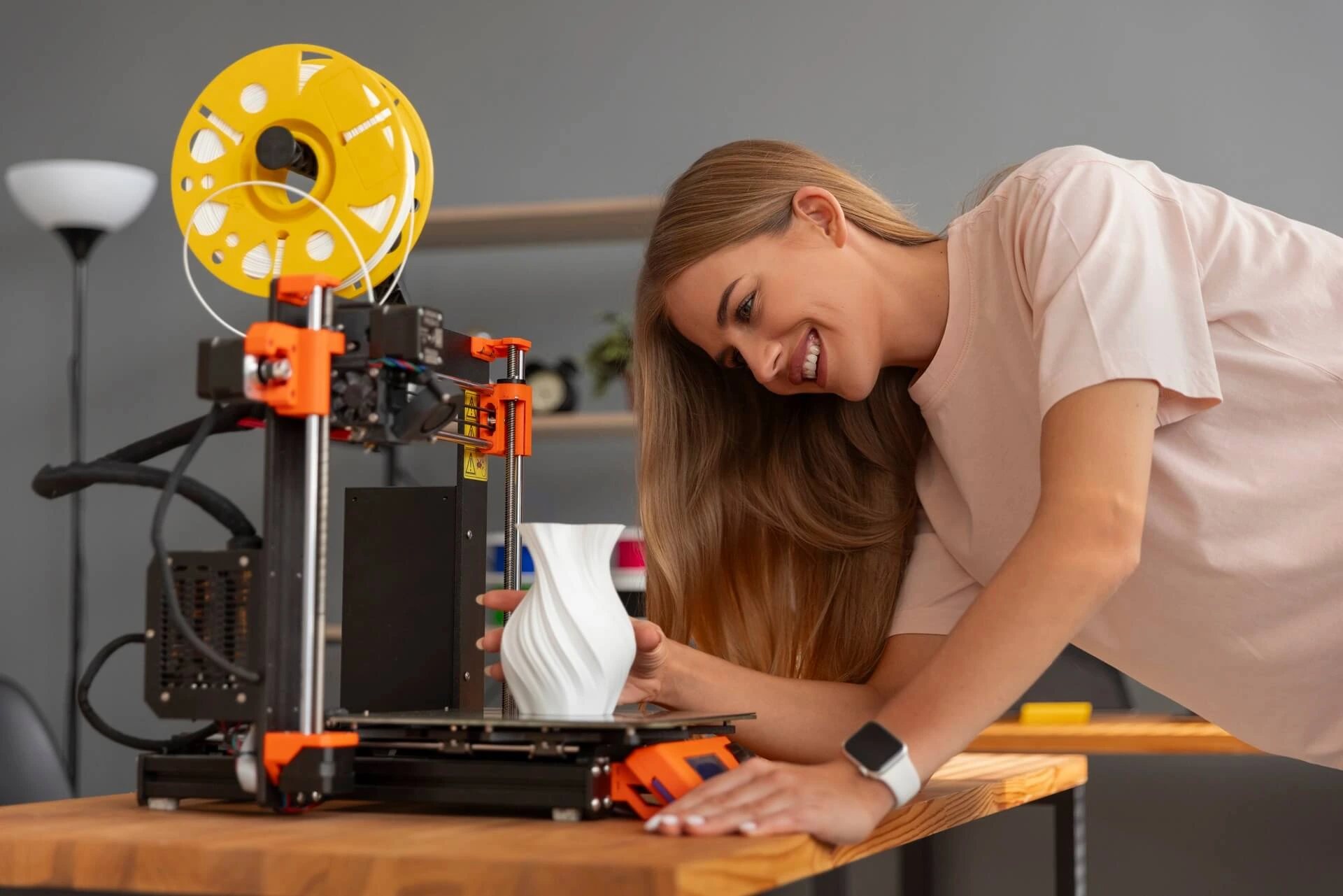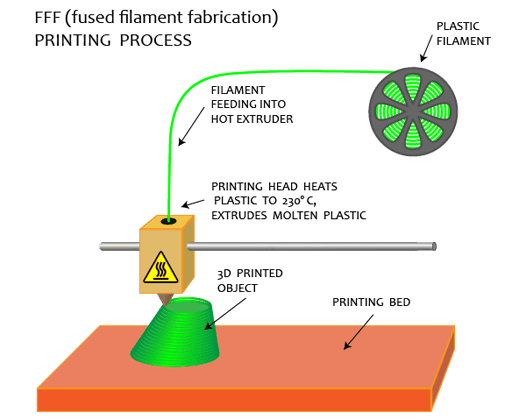WHAT IS 3D PRINTING?

WHAT IS 3D PRINTING?

3D printing is an additive manufacturing process in which three-dimensional objects are created from digital files. This process was first invented in the mid-1980s, in which a printer uses various materials such as plastic polymers, resin, or even metal to create 3D objects. 3D printing allows for ultimate customizability because it allows individuals to produce single one-off products without the need for expensive retooling.
The process of 3D printing is a no-waste process, which allows companies to streamline their development and prototyping processes while also reducing costs and improving lead times. 3D printing is truly a disruptive innovation in manufacturing, much like the printing press did for the mass production of printed materials and the dissemination of knowledge.
How Does 3D Printing Work?
Unlike a CNC mill where a 3D object is created by wastefully removing bits of material from a larger block, 3D printing works by building an object layer-by-layer and only adding the necessary material to create the object. The process of additive manufacturing is to first develop a model, which is then digitally produced and sliced into thin layers. The printer adds plastic layers on top of each other through precise motions until the print is complete.
Step 1: Modeling and 3D Printing Software
The first step in the 3D printing process is to either acquire a 3D file to print or to create your own. There are an abundance of repositories for 3D models if you do not have the ability to create your own, such as thingiverse, pinshape, and sketchfab. If you have access to the software and the ability to create your own CAD (computer aided design) file, then you can design your own personal file to 3D print. Just like with 3D models, there are a myriad of possible CAD software that you can use to design your own object such as Blender, SketchUp, and TinkerCAD.
Free 3D Printing and Modeling Software:
Step 2: Slicing
After you have a model to 3D print, you need to prep the file so the 3D printer can interpret the data and print your object. A slicer takes your 3D model’s file (which is typically an STL, M3F or OBJ file) and cuts the object into thin horizontal layers that the 3D printer’s print head follows layer-by-layer.
Step 3: Choosing the Right Material – 3D Printer Filament
But what materials does a 3D printer use? 3D printer filament comes in all kinds of configurations with each filament having specific benefits and applications. Before you print, take into consideration what your print will be used for and choose an appropriate material. The two best known filaments are ABS (Acrylonitrile butadiene styrene) and PLA (Polylactic Acid). PETG filament is also increasingly popular as a “best of both worlds” option between ABS and PLA. Other materials include PLA/PHA, HIPS, Nylon, PVA, as well as hybrid PLA infused with wood or various metals.
If you are not sure which 3D printer filament to use, look at this filament comparison guide provided by MakeShaper! When you're ready to buy, browse our selection of 3D filament.
Step 4: Printing
Now it’s time for the printing! Every 3D printer is different and to get the best performance and print quality, you must fine-tune your 3D printer’s settings. There is a myriad of 3D printers on the market so it’s best to follow the manufacturer’s instructions and the 3D printer filament manufacturer’s recommendations as a baseline and work from there to arrive at the optimal settings. Bed adhesion, along with print speed, extruder setup, temperature, and retraction are key factors when it comes to making sure you get the optimal results when 3D printing.
Step 5: Post-Process Finishing
Some post-process finishing work may be necessary considering how most common 3D printers work by building layers-upon-layers or the size forces you to print in multiple pieces. First, if you have printed using support material, you will need to remove it. If you have used a soluble material or filament such as PVA or HIPS, use the appropriate solution to dissolve your material. Acetone vapor can be used to smooth ABS prints, while PLA and other materials may require sanding and filler to hide layer lines. There are products like XTC-3D® that brush on and give your print a smooth shiny look if that is the desired result.
